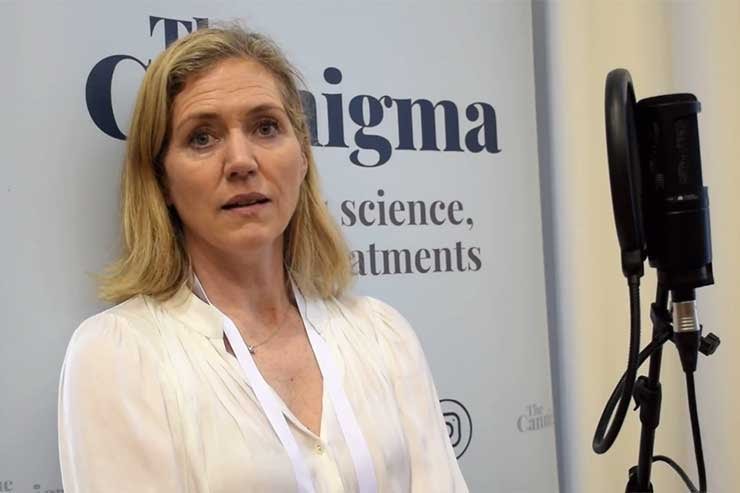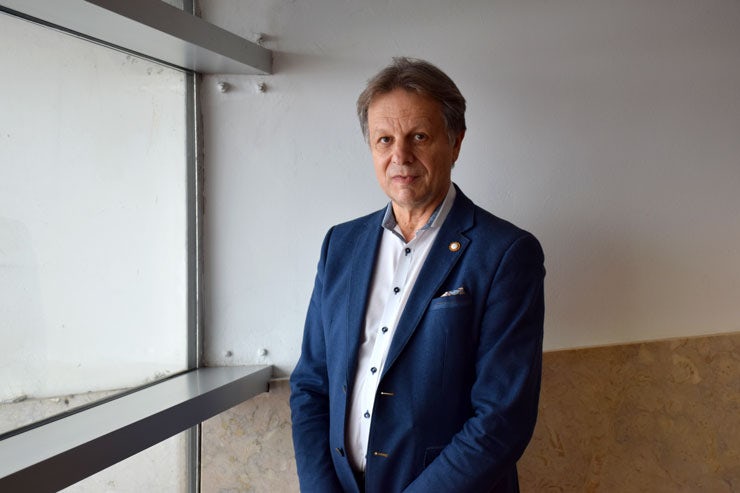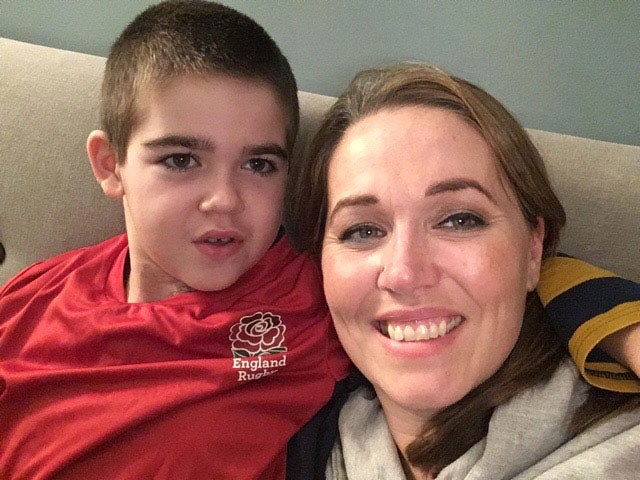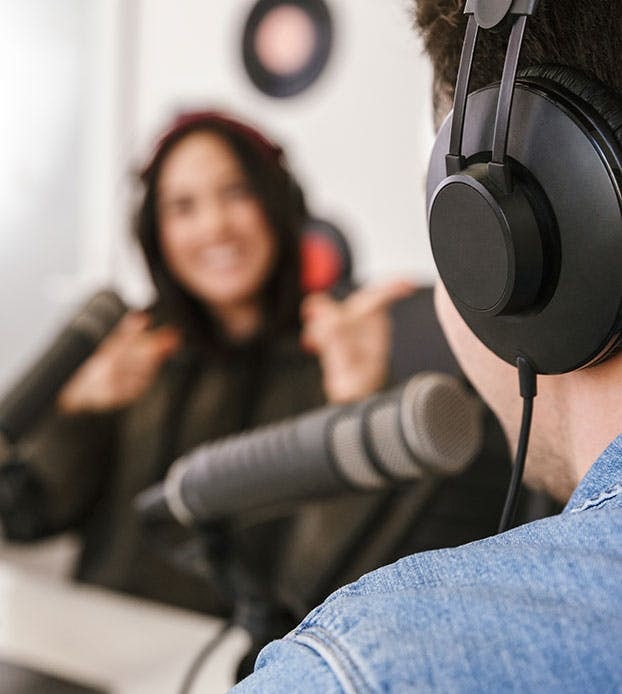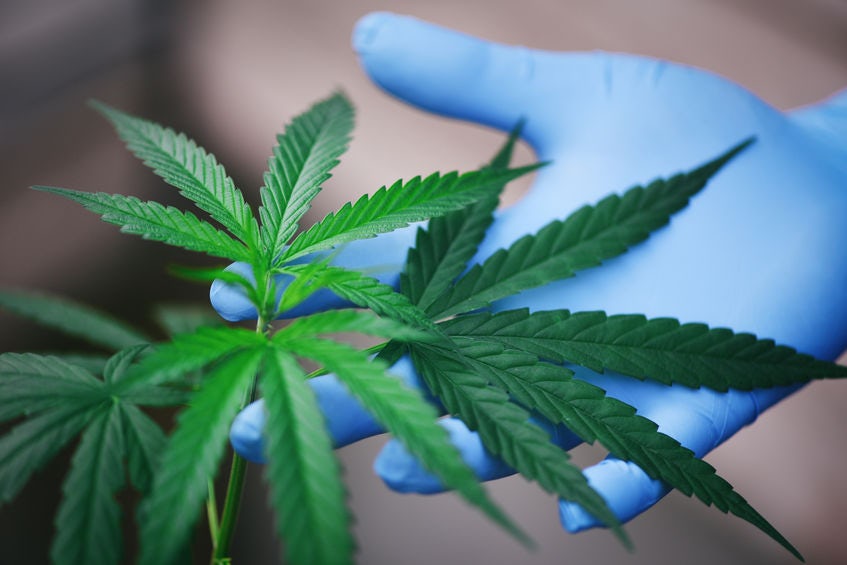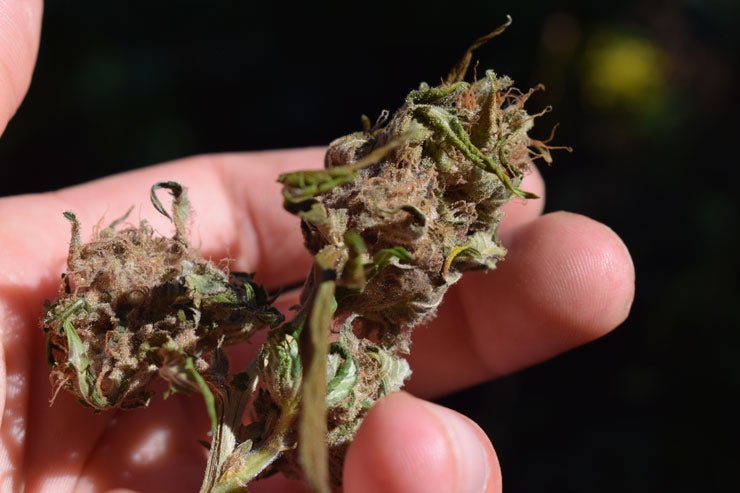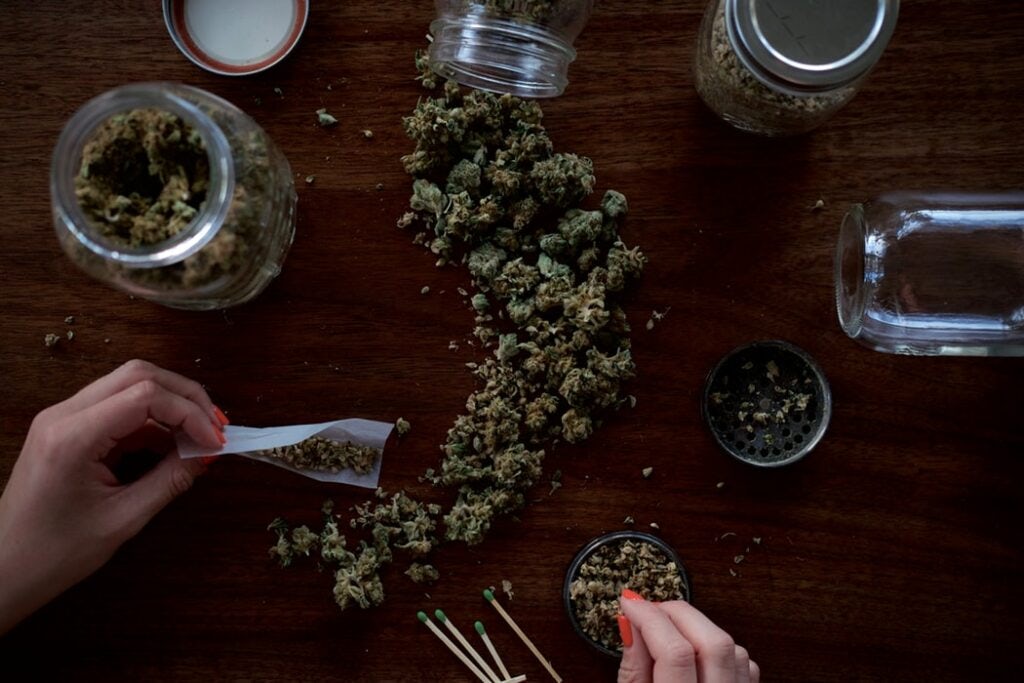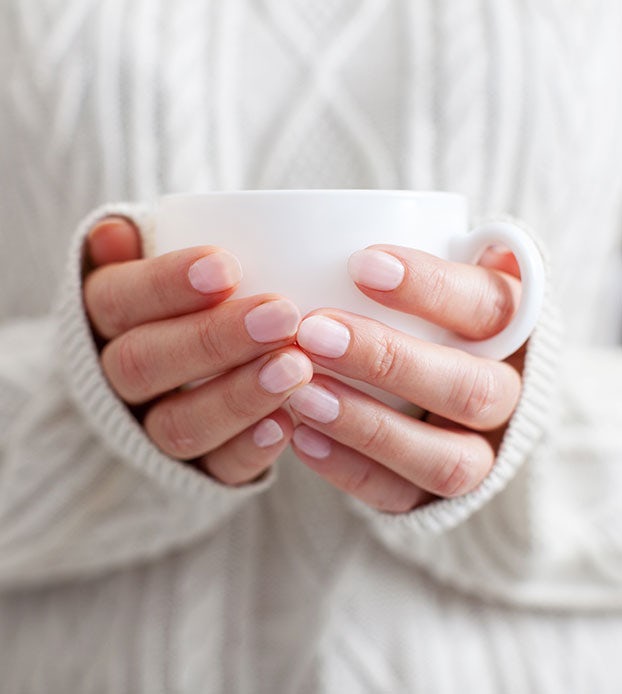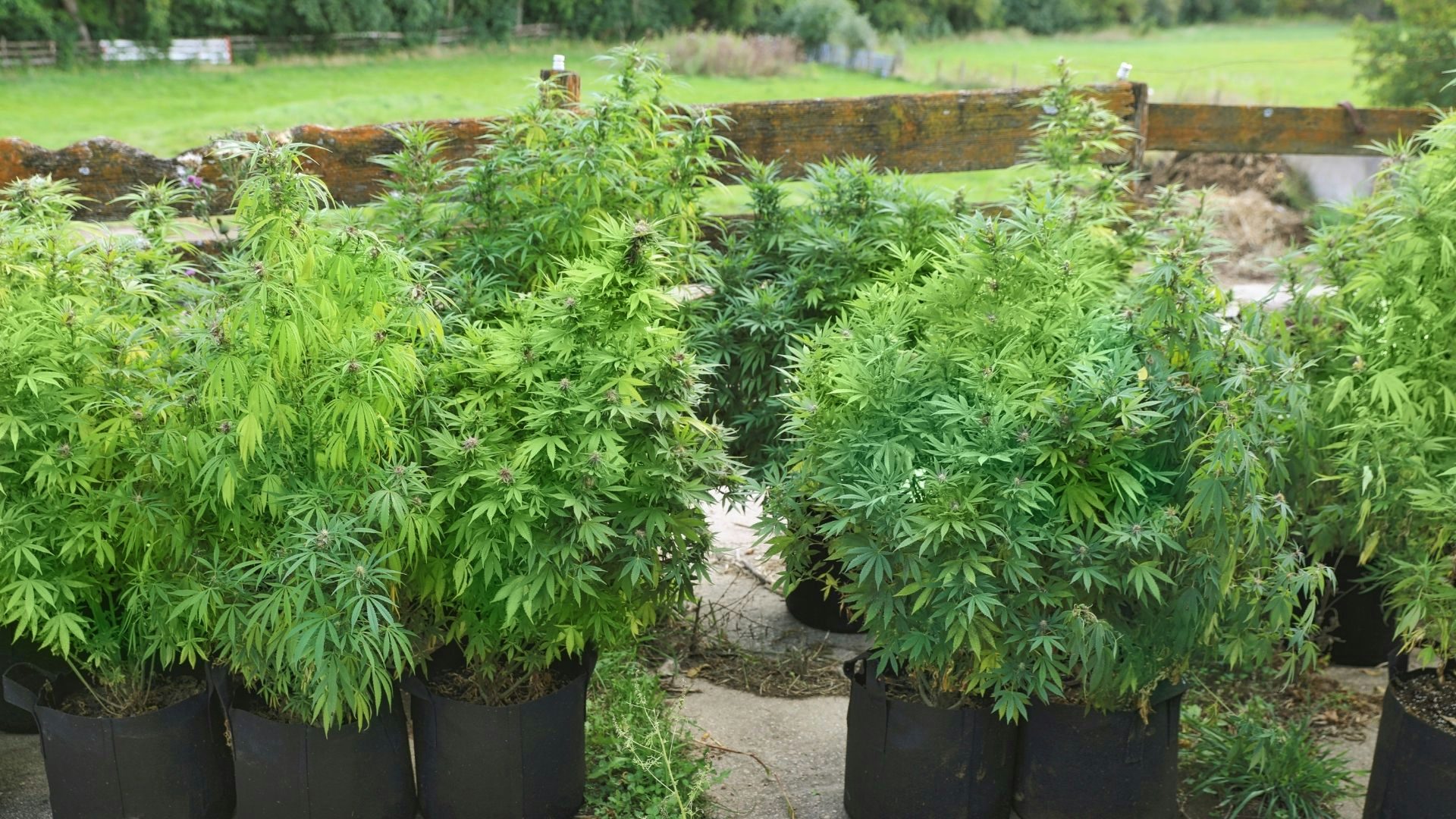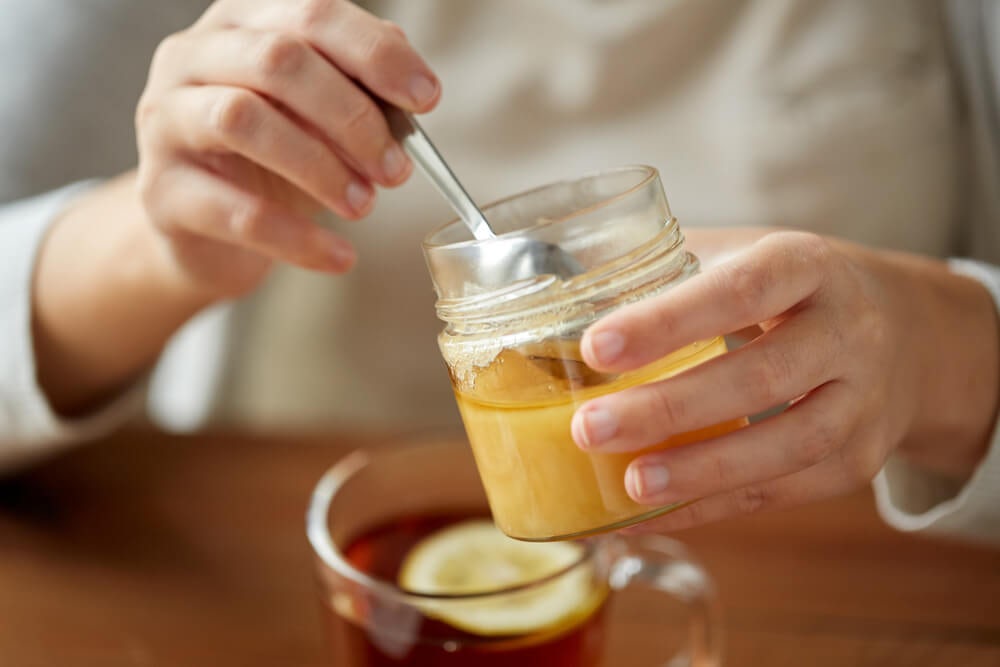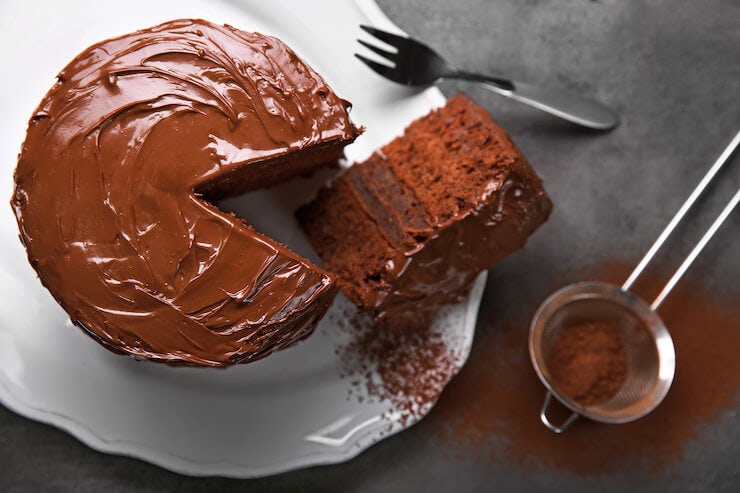When Mara Gordon started using medical cannabis there wasn’t any lab testing — or any way to know how much of each cannabinoid or terpenes were in any given strain . There was definitely no way of ensuring that you got the same effect from it consistently.
So she drew on her profession as a process engineer and decided to start doing it herself.
Gordon has been featured in the Netflix documentary, Weed the People, and owns and operates two medical cannabis companies.
One of the things she does is collect and analyze data about cannabis products and how patients with different medical conditions respond to them. All of that data is packaged into software doctors can use to manage their patients’ medical marijuana treatment.
“I know how to collect data. I know how to analyze data. I know how to make I incredibly good medicine, but [doctors] have to be the ones managing [their] patients’ care,” Gordon says on The Cannabis Enigma Podcast.
What’s one of the most surprising things she’s learned from all of that data? “The lack of correlation between the weight of the patient and the dose,” Gordon says. “That was shocking.”
At the end of the episode, stick around for a Q&A with Dr. Roni Sharon about using cannabis to treat anxiety and depression.
Listen here:
Listen or follow on: Apple Podcasts | Spotify | Google Play
Produced by Elana Goldberg and Matan Weil, edited and mixed by Michael Schaeffer Omer-Man, sound engineering by Yoav Morder. Music by Desca.
Full Transcript:
Elana Goldberg: Hi Mara, thanks for joining us today.
Mara Gordon: Hi, I’m very happy to be here. Thank you for inviting me.
Elana: Let’s go back to the beginning. Tell us how you got into the industry. Why cannabis?
Mara: I got in as a, a patient both for myself and for my husband. Back in those days there was really no lab tested medicine at the dispensaries. They just had flower and homemade brownies and things like that and there were really no options. I’m a processes engineer, so I approached this as science. And I was like, somebody has to be able to figure out a way to know how much of each cannabinoid, and the terpene in the profile, so that we can have a consistent medicine. So I just started doing it myself.
Elana: And what were you treating, if you don’t mind me asking?
Mara: Well my husband, in his case, he was having a posterior-anterior fusion, which is a very, very complicated spinal surgery. And I had been a serious chronic pain patient, plus some other issues after having spinal meningitis back in 1996.
So I had been on over 26 pharmaceuticals, including fentanyl, um, and, you name it. And um, I had gotten off of all of them because they don’t really help with chronic pain, they’re good for acute. So I was searching also for something for myself. The one important point in addition to this, is my husband has now been sober for 31 years. And so, obviously much less back when we started, but he was not willing to risk his sobriety to have the surgery. He said he would rather have become a cripple and be in a wheelchair than to risk it. So, cannabis was kind of a Hail Mary hoping that it worked, and it did.
Elana: And how did it turn into a career?
Mara: I don’t see it as a career. I see it as what I do every day. I was happily retired. I mean I wasn’t happily in pain, but I was, I was done, I thought. And it’s one of those things that when people started seeing what was happening with us, they started asking us to make medicine for them, and then for their family members. And then, then I started treating cancer patients, and I’ve treated, oh, I don’t even know how many thousands of cancer patients at this point.
But you know, cancer patients talk to other cancer patients in waiting rooms. And so I would treat a cancer patient, and then the next thing I know six or 10 more cancer patients would be calling and saying, “You helped so and so, please help me.” Or, “Help my daughter, help my baby.” And, tikkun olam, I don’t know how to say no to helping and being of service to somebody. I mean, it’s like, no, I couldn’t, there’s no way. So I just kept working, and then it came to the point where we couldn’t do it all ourselves, and so then I brought in a nurse and then doctors and lab directors, and trained them in our methodologies, and expanded exponentially from there. You know, started doing clinical trials through Zelda Therapeutics, and all the other things I’ve done.
Elana: Can you tell us a bit about that doctor’s education? How does that process work?
Mara: Well, initially, I started training nurses and then — you know, I love nurses, they’re wonderful, thank God we have them. I don’t think that it’s the right mentality necessarily, for setting a dosage with patients, because nurses tend to be … Oh, they’re going to hate me for this, but nurses tend to be more accustomed to following instructions, and not taking, not going outside of that because there’d be terrible repercussions to their careers if they did.
Now, you have nurse practitioners and physicians’ assistants and things like that that are in a different category, but I’m talking an average licensed vocational nurse or RN. They’re just not the same mindset for understanding. They don’t have the same kind of coursework and the physiology and pharmacokinetics and things like that.
So I, when I realized this and I switched to doctors, I actually went and spoke to the Society of Cannabis Clinicians initially, and a small group of doctors approached me and came to me and said, “We just want to follow you around and see what you do.” And I was like, “I don’t … I’m not a doctor.” But I actually had … the first doctor sat on over 70 intake calls with me with patients, before he felt comfortable taking the first patient himself. And then he started training some of the other doctors. And I occasionally still obviously do some, but the whole idea was to always make it medical professionals doing this, and not me.
Elana: And do you come up against any backlash in the process, from the medical community or elsewhere?
Mara: Absolutely. There have been many, many doctors who have been derogatory towards what I do. And you know, the way I look at it is you know, when somebody bashes someone, they’re bashing them, saying something about themselves more than they are. You know, what, what are they afraid of, right? Because I’ve made it clear, and there’s a lot of videos out there that people have posted of my talks. And I make one thing very, very clear always, and that is that I am not a doctor and I believe that this should be … Doctors should be the one making the recommendations.
All I’m doing is collecting the data. Now, what you do with it is up to you. You know, I know how to collect data, I know how to analyze data. I know how to make I incredibly good medicine, but you have to be the one managing your patients’ care to determine whether what they’re taking is going to have interactions with their other medications or you know, what, their comorbidities, that sort of thing.
Granted, I’ve built a software platform that supports all the data that the doctors use. But they don’t all use it, and they don’t all use it continuously or whatever. And, and some of them incorporate pieces of it into their existing, their own software. But what’s important at the end of the day is that they have a starting point for knowing where to start, so that … One of the earlier speakers today talked about five milligrams per kilogram, that’s true in an age range between you know, maybe zero and three. Right? But what if your patient is 10, or 20, or 30? What if your patient has these comorbidities, all those things? So I’ve built all that in as a starting point for doctors, and then their work keeps making the data smarter.
Elana: I think one of the things that that really stands out with cannabis medicine as opposed to more traditional medicine is that so much of the information actually lies with the patients rather than with the institutions. And so this data that you have is so much more important. What have you found out along the way that’s been surprising to you from the data that you’ve gathered?
Mara: Well I think just, to the point I made before, I think the thing that initially was so surprising is the lack of correlation between the weight of the patient and the dose. That was surp- that was shocking. You’d see some big giant guy and make the assumption that this person is going to need enormous amounts, and they might be a lightweight, you know?
I hate to use the pejorative, but they might be. And then you’d meet some scrappy young woman or old woman, and she would, what she would be using would have me flat on the floor, you know? And that there is none… the idea that there’s a difference in the aging is such a huge thing, because when I get … When I work with the pediatric cancer patient, which is probably what I’m … Though it’s not the most of what I do, it’s the most I’m known for, for various reasons, I would tell that does to the parents and they’d be like, “What?” And then, I had one instance where a parent decided to try it for herself. She goes, “I can’t give this to my child.” And I’m like, “Number one, you’re not six. And number two, you don’t have stage four glioblastoma multiforme.” So, it’s not gonna be the same. And to get people to understand that it’s, as you get older you need less, where allopathic pharmaceuticals have the lower doses for the younger patients.
Elana: So does that mean that a pediatric patient would actually lower their dose as they get older?
Mara: That’s exactly what that means. As they get older the dose would likely go down. You can talk to long time cannabis users that have been using it for 30, 40 years, and they’ll tell you, “I can’t use anything like what I used to use.” Now they aren’t just talking because it’s stronger, because its still about the milligrams. If it’s stronger, it doesn’t mean that you have to get higher, it just means that you have to smoke less or take less, or whatever. It’s just math.
But oftentimes these older patients, or these older individuals will say that they’re shocked at how they just don’t have the capacity anymore. It’s the same thing with alcohol though. It’s the same thing with a lot of things, that as you age you just … I mean I have a glass of wine now and I’m done. I used to be able to have you know, would go have a bottle of wine before we went out as a starter.
Elana: I can relate to this.
Mara: Yeah, you know? So I mean, I can’t even imagine doing that anymore.
Elana: Right. And what about conditions? Has the data that you’ve gathered helped you understand what sort of product to prescribe to someone depending on their condition, and obviously age and other factors as well?
Mara: Yes. We have actually, because we have full lab results on every batch that’s been done since 2000 … Early 2011- So we got a lot of data on a lot of patients and a lot of products.
Elana: Right.
Mara: We’re able to say, okay, when I’m doing a, creating a report or looking to do some statistical analysis in our data, I can look at it and say, “Okay. Based upon the lab results associated with this…” It’s called ICD-10 code. It’s the codes that are used for billing insurance companies. But it’s also the way that I’ve been collecting the data, so that when somebody has a particular type of cancer, we’re specifically going to be tracking data around that same diagnosis, right?
Because people say to me, as an example, they’ll say, “I have breast cancer.” Well there’s so many different types of breast cancer and they’re all treated differently. So we want to get very specific.
Anyway, so we can look at that and we can say, “Okay, we’ve treated, you know, 150 glioblastomas.” For example, multiforme. Let’s just say GBM. And within this age group, from this, you know, zero to 10 years old. And of those they have used this much THC and this much CBD on average. This is the profile that is found to be, over time, the most well tolerated and well accepted, and where we’ve seen the best results.
We cannot claim causality, by any stretch of the imagination. But we can also, back to what I said in my presentation today about compliance and what’s required for compliance. If these are the ones that are going be the most comfortable for the patient. The other thing that I look at is, terpenes, for the mos- they’re found in other plant sources. So you look at other plant sources and what their medicinal benefits are.
And I’ve tried to select those that have, at least well enough understood from, either from um, Ayurvedic medicine, or some other plant medicine, herbalist, to find out which other … For example, Lavender, like I talked about. To have that, because it has a sedative, calming effect — no so sedating, but calming more. Then I’m going to want to have profiles that have more of the linalool. And so as a result, that’s what I’ve been using.
Now, I have also tried using ones that have a very different profile. And for certain people where they have, you know, like, let’s go back to cancer. But they also have PTSD, or ADHD, or severe anxiety, or you know, OCD. Whatever it is, we can maybe give them something that also has more pinene in it, and it’ll help to make them more comfortable so that they don’t have that paranoia that can come with too much sedation.
Elana: And when you’re making the products are you using single strains? Or are you mixing strains and adding in the terpenes in order to pull these profiles together?
Mara: Well we never add. Okay? We only subtract.
Elana: Okay.
Mara: All right.
Elana: So does that mean you’re taking, like I asked before, is it a single strain or are you adding strains together and then, subtracting?
Mara: Right, we only use a single strain. Except we call them cultivars, because a strain is a bacteria.
Elana: Yeah.
Mara: Yeah. So we call them, we use some cultivars. So we’ll use a single cultivar. There are certain products that we make where we are mixing two. For example, we have a one-to-one THC to CBD ratio product, that has 10 milligrams per milliliter each of THC and CBD.
We’re using a particular profile of a hybrid that we’re using on the THC side that’s pretty consistent. I mean we’ve got … When we have a grow now that we find something we want, we buy all of it.
And then we have the same genetics and have it grown over and over again. So, there’s going to be slight variances, but in, in a natural product there’s always slight variances, right? And then on the CBD part of the formulation we use ACDC.
So, we are, in that case we are mixing two to make one product. But I don’t mix two different cultivars to make one extract or something of a … Like, I wouldn’t take three or four THC flowers and mix them together to make a particular profile. I would search for … I mean I’m not against doing that and I’ve done it in the past. In fact, in the film, Weed the People, they’re showing where I actually had been doing that to create an effect in particular for a woman.
That is something that some day, in my fantasy world, I have this beautiful store with all … You know, have you ever gone into an olive oil store?
Elana: Of course.
Mara: Okay you know, they have all the beautiful, and you select and you taste them and you try them, and, and then they, you get the ones. I would love to have a similar setup, but where I could take, you know, three parts Banana Kush with one part Sour Diesel, and you know, that are the profiles of those, and put them together to create this profile.
I believe in doing that. I don’t believe in the adding of, of artificial or external terpenes. Without exception, I have not seen it done where it was done well. They tend to add too much and it’s … people don’t feel as good from it. And if people don’t feel as good they’re not going to consistently take it.
Elana: Right.
Mara: Yeah.
Elana: So you mentioned the three factors for compliance. For our listeners that missed your talk here at the Portugal Medical Cannabis Conference, can you run over those quickly?
Mara: Sure. So I talk about the comfort, and I talk about the cost, and I talk about the consistency. And those three things being very important to have somebody be compliant. If you take your medicine and don’t feel that it’s a compulsory thing to do, and it doesn’t make you feel comfortable, you’re not going to comply. You’re not going to take it, because it doesn’t feel good. So you’re not going to do it. The other thing is … I’ll tell you a personal story very quickly on that.
I take Agarikon mushrooms every day. And it gets really expensive, because I take double of what … Because I’ve had MRSA, so I take quite a lot. Anyway, so somebody suggested that I just buy the powder and put it in a drink — or drink it. Well, it was disgusting. And yeah, I could sit there and put it in capsules and do all that, but I’m not going to do that. It’s just not, it’s just not, it’s not comfortable. It’s not within my zone of comfort of how I live my life, and how I take my medicine.
So I was not complying. So I went back to capsules, even though it’s expensive, it’s a luxury worth it for me.
Cost, obviously unless it’s being covered by the government or by private insurers or whatever, the cost can be extraordinarily prohibitive for patients. And we have to work to get that down. One of the things that I think is so important about understanding dosing, is in order to reduce the cost. Because, with very few exceptions, people are under … Excuse me, or overdosing themselves. And I mean overdose, I don’t mean oh you’re going to die and end up in the gutter. I mean but, over what a therapeutic dose would be.
So, and because it’s so expensive, it’s not practical to do that. You wouldn’t take you know, an expensive Saigon cinnamon, and be wanting to get a couple of granules of it and just take the lid off and open it all over the table and swoosh off into the trash what you don’t need, right?
Yet, people with cannabis, they take far, far more than they need to achieve what their objective is. And then third thing is, let’s see. Cost, yeah, consistency.
So, you can be consistent with a whole plant within certain parameters, of the fact that or example, when my curcumin shows up every month, when I get it, order it and it comes, sometimes it’s a dark orange, sometimes it’s a brownish. Sometimes it’s a bright orange. It’s because it’s a slightly different plant. As long as it’s having the same effect and it’s the same basic profile, people are comfortable. And I also think that people do better when there’s a slight variance in it, you know over time, than having the exact same thing, time and time and time again.
Elana: Why do you think that is?
Mara: I think that we build up just a tolerance, and we build up a sense where you know, you can still have — perhaps some of the therapeutic effects. If what you’re trying to treat is a seizure disorder, or if what you’re trying to treat is a tumor, reduction of tumor size. But if you’re trying to reduce anxiety or PTSD, or insomnia and things like that, you have to still be able to have that full effect of it and not just the underlying effect on the body.
So, it doesn’t really seem to matter. I also think that having some just variances in general is healthier for us. It keeps our immune system stronger, it keeps us having to, constantly having to fight this or that, and that’s how we build strong bones and bodies, as they say.
Elana: It sounds like uh, good advice in general.
Mara: Yeah.
Elana: I think, not only just in terms of cannabis.
Mara: Yeah, I mean anything. I think about you know, like I said I’ve been vegetarian for 48 years now, and I eat mostly home cooked plant-based foods. And there’s something about making … It’s not going to be the same each and every time, versus opening a can of something or a frozen food, where replication and exactly the same is key there. But there can be a certain tolerance for variances.
Elana: Yeah. Makes a lot of sense. Mara, thanks so much for joining us today.
Mara: My pleasure. Good luck with your website. It looks really interesting, and I’ll be looking at it and watching you develop it and sending people there.Elana: Thanks very much.
Ask the Doctor: Treating Anxiety and Depression with Cannabis
Michael Schaeffer Omer-Man: With me now is Dr. Roni Sharon, a neurologist and pain specialist practicing in New York and Israel and the medical director here at Cannigma.
Dr Sharon, we asked you to come in today for a little section we’re calling “Ask the Doctor.”
While we were recording the previous segment, we actually got a message on one of our Facebook pages asking: Can cannabis treat anxiety?
So I wanted to ask you, we know that’s actually one of the most cited reasons that people do use cannabis. Is it effective? Is that something that you prescribed cannabis for?
Dr. Roni Sharon: I’m not surprised that people are asking that. I think people come to me asking about anxiety more than anything besides pain — and I’m a pain specialist. Anxiety is incredibly common. It’s something we see in a host of other conditions as one of the main symptoms that people experience. And guess what? Cannabis works really, really well for people with anxiety — most of the time. Sometimes it actually worsens people’s anxiety, and sometimes it depends on the strain and the person, but I’ve had a lot of success treating chronic pain and other conditions when people have a component of anxiety.
That being said, I work in New York and anxiety is not a condition that I can approve marijuana for and I have to let down a lot of people because if they don’t have a condition that I can approve them for, [which] they’ve tried medicines for, I cannot approve them for anxiety alone.
Michael: And what about depression? I imagine it has the same problem — that it’s not an approved condition. But it’s something that people do use cannabis for, and I think it is used to treat it in other places.
Dr. Sharon: Yeah, absolutely. Depression, anxiety are separate conditions. They have their own features and their own symptoms.
They’re different. We treat them with similar medications. I tend to find that marijuana is more helpful for anxiety than depression, but that being said, and anecdotally, and according to some research, cannabis has been very, very helpful for depression. Again, this is very important: It’s not for everyone.
There [are] treatments for depression. There are non-pharmacological treatments for depression. There’s lifestyle changes. Marijuana can be part of the solution.
Michael: In a more traditional pharmaceutical, psychiatric setting, some of the same drugs are often used to treat anxiety and depression. How does marijuana work in relation to those from a neurological perspective?
Dr. Sharon: Well, marijuana can actually increase the same neurotransmitters that the anti-depressants work on. That’s one way. Another way is on activities of daily living, sleep, for instance. Marijuana can help people sleep, and when people get better sleep, symptoms of mood problems like anxiety and depression are significantly improved.
Michael: One of the things that we hear about, and the actual botanical science behind this is a little bit iffy, is the difference between indica and sativa. One is said or known, at least anecdotally, to be more of a depressant — puts people in a more relaxed mood, maybe even to sleep. That would be indica. And sativa, more of a more energetic feeling and that can actually induce some anxiety, at least in some people. Would you have a recommendation there? Is there a difference?
Dr. Sharon: It’s a really great question. I wish that I had a clear answer for you. I think doctors, patients, and everyone in between get confused by the labels of indica and sativa.
What I found is that very often we’ll label things that are more calming and relaxing as indica and the opposite with sativa. But that’s not necessarily the case in…Marijuana is an incredibly complicated plant and there’s different parts to it. In addition to CBD and THC, there’s terpenes and other molecules that can impact people’s functioning, and I think those have factors as well that play into how they work on people.
The most important thing is trial and error. What’s cool is that there’s no harm in trying one thing and then trying another thing. It’s just important to, in the beginning, whenever you try something new, and I say this about medications as well, try to a low dose, go up slowly, do it with people around you that care about you. Try it in the comfort of your own home and there shouldn’t be a problem.
Michael: And if somebody does, you know, freak out or have an anxiety attack after trying marijuana?
Dr. Sharon: [It] happens, and that’s okay. It passes. The vast majority of time, just allow time to play out and the effects will go away. It’s important to start at a low dose, so generally we don’t have that problem. Do it with people around you. They can help out if that happens, but just allowing time to do its part really is the most important thing to do.
Michael: Thanks so much for joining us, Dr. Sharon. Dr. Sharon: Great to see you, Mike.
Sign up for bi-weekly updates, packed full of cannabis education, recipes, and tips. Your inbox will love it.


